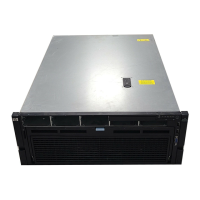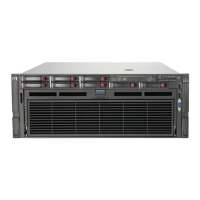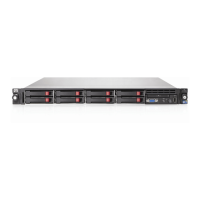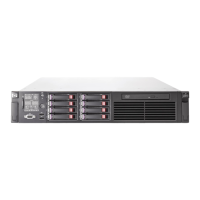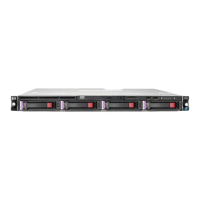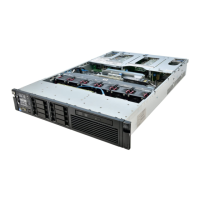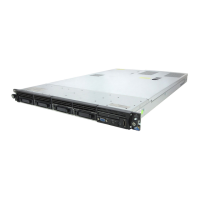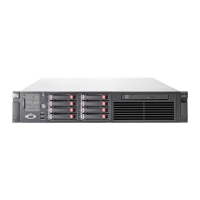Component identification 21
LED3 pattern LED4 pattern Interpretation
Off
Flashing (2 Hz) The system is powered down, and the cache contains data that has not
yet been written to the drives. Restore system power as soon as
possible to prevent data loss.
Data preservation time is extended any time that 3.3 V auxiliary
power is available, as indicated by LED 2. In the absence of auxiliary
power, battery power alone preserves the data. A fully-charged
battery can normally preserve data for at least 2 days.
The battery lifetime also depends on the cache module size. For more
information, see the controller QuickSpecs on the HP website
(http://www.hp.com).
Off
Double flash, then
pause
The cache microcontroller is waiting for the host controller to
communicate.
Off
Flashing (1 Hz) The battery pack is below the minimum charge level and is being
charged. Features that require a battery (such as write cache, capacity
expansion, stripe size migration, and RAID migration) are unavailable
temporarily until charging is complete. The recharge process takes
between 15 minutes and 2 hours, depending on the initial capacity of
the battery.
Off
On The battery pack is fully charged, and posted write data is stored in the
cache.
Off
Off The battery pack is fully charged, and no posted write data exists in
the cache.
Flashing (1 Hz)
Flashing (1 Hz) An alternating green and amber flashing pattern indicates that the
cache microcontroller is executing from within its boot loader and
receiving new flash code from the host controller.
On
— A short circuit exists across the battery terminals or within the battery
pack. BBWC features are disabled until the battery pack is replaced.
The life expectancy of a battery pack is typically more than 3 years.
Flashing (1 Hz)
— An open circuit exists across the battery terminals or within the battery
pack. BBWC features are disabled until the battery pack is replaced.
The life expectancy of a battery pack is typically more than 3 years.
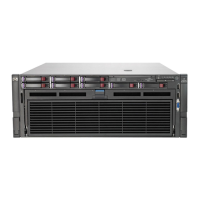
